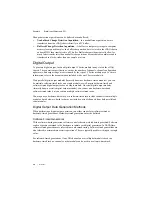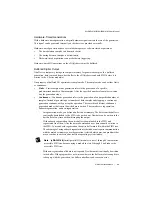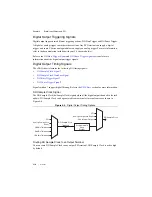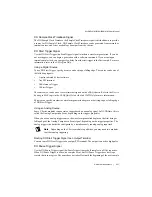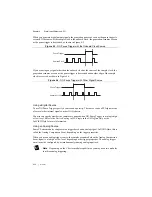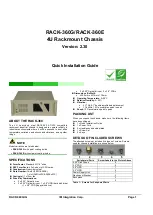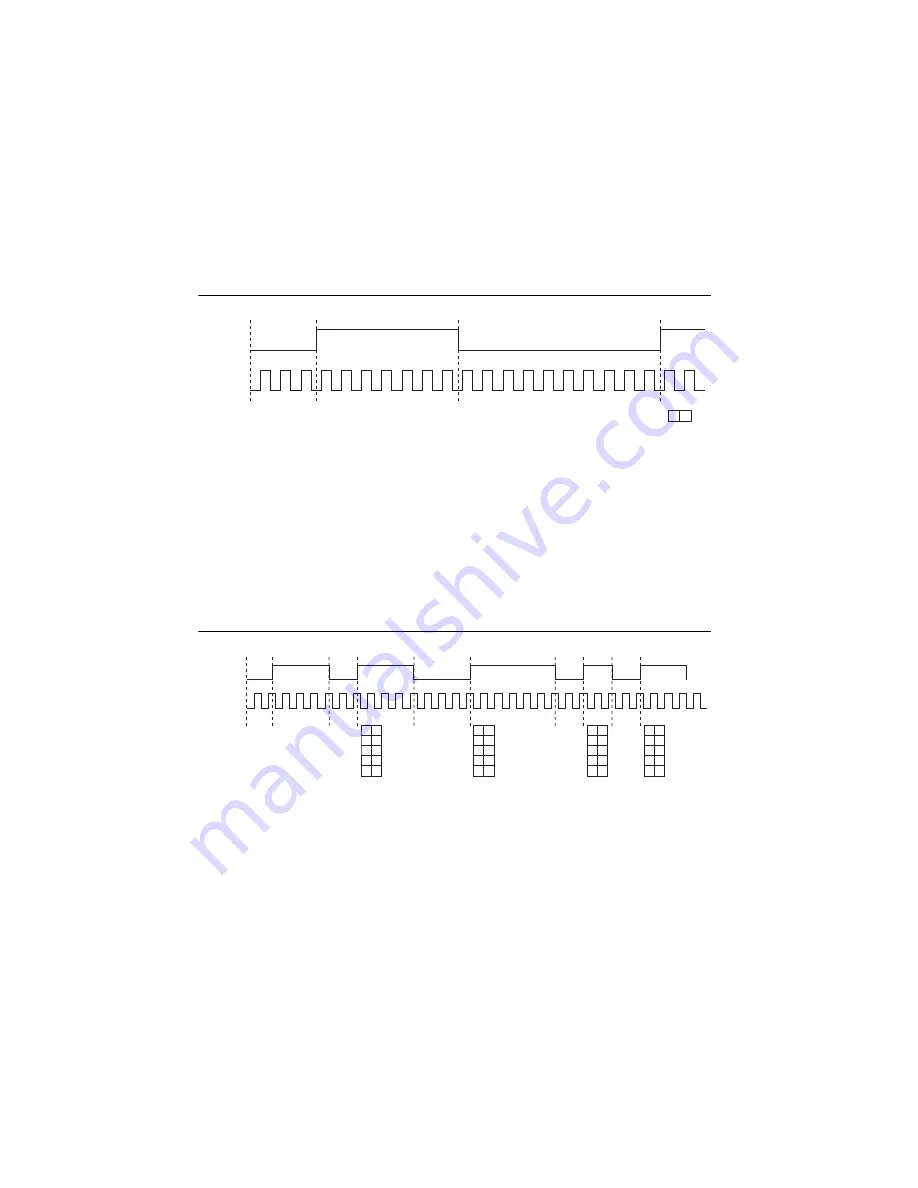
5-8
|
ni.com
Chapter 5
Counters
Single Pulse Measurement
Single (on-demand) pulse measurement is equivalent to two single pulse-width measurements
on the high (H) and low (L) ticks of a pulse, as shown in Figure 5-8.
Figure 5-8.
Single (On-Demand) Pulse Measurement
Implicit Buffered Pulse Measurement
In an implicit buffered pulse measurement, on each edge of the Gate signal, the counter stores
the count in the FIFO. The STC3 transfers the sampled values to host memory using a
high-speed data stream.
The counter begins counting when it is armed. The arm usually occurs between edges on the
Gate input but the counting does not start until the desired edge. You can select whether to read
the high pulse or low pulse first using the
StartingEdge
property in NI-DAQmx.
Figure 5-9 shows an example of an implicit buffered pulse measurement.
Figure 5-9.
Implicit Buffered Pulse Measurement
Sample Clocked Buffered Pulse Measurement
A sample clocked buffered pulse measurement is similar to single pulse measurement, but a
buffered pulse measurement takes measurements over multiple pulses correlated to a sample
clock.
The counter performs a pulse measurement on the Gate. On each sample clock edge, the counter
stores the high and low ticks in the FIFO of the last pulse to complete. The STC3 transfers the
sampled values to host memory using a high-speed data stream.
Co
u
nter Armed
G
a
te
S
o
u
rce
H L
7 10
7
10
L
a
tched
V
a
l
u
e
9
8
7
6
5
4
3
2
1
5
6
4
3
2
1
G
a
te
S
o
u
rce
H L
4 2
H L
4 2
4 4
6 2
2 2
H L
4 2
4 4
6 2
H L
4 2
4 4
B
u
ffer
Co
u
nter Armed

